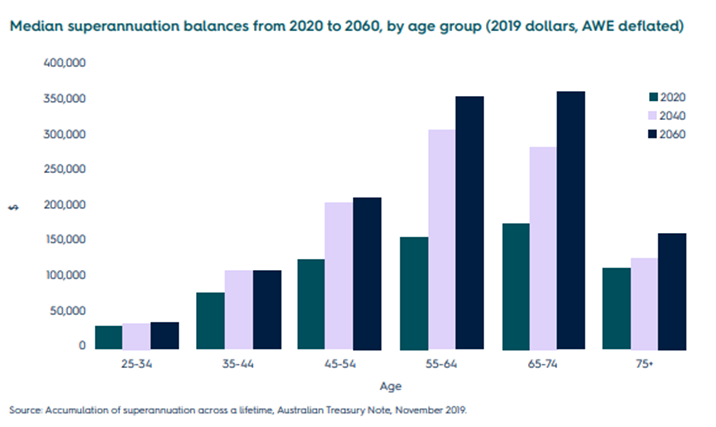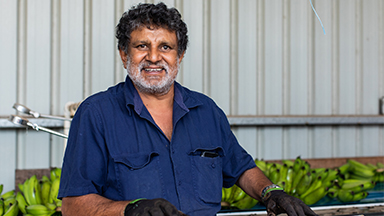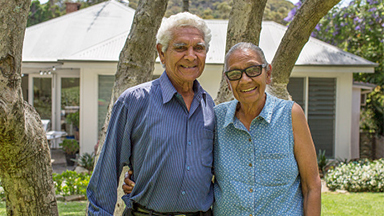For over 30 years, Australia fought a great national crusade to provide dignity in retirement. Is it working? The numbers suggest so.
Our superannuation coffers now hold $2.3 trillion1 - that’s nearly 150% of GDP. In 2022, pension flows out to members were worth nearly 7% of GDP.
The evolution of our super system has changed our country by altering expectations of how old age is lived. AMP Head of Investment Strategy and Chief Economist Shane Oliver says, “Super underpinned capital flows into our economy and picked up the tab for much of our national infrastructure. It also made us a nation of mini capitalists. Super created a feeling of financial independence.”

We’re getting there – the changing face of retirement
There’s growing evidence the system is doing what it was designed to do. Firstly, the cost of retirements is falling more lightly on the taxpayer. The Retirement Income Review suggests that by 2060 the number of eligible Australians on the age pension will fall from 71% to 62%.
Conversely, the number receiving a part rather than full age pension will rise from 38% to 63%.
At the same time, a dignified, comfortable retirement could be available to more people. The average range of retirement capital outcomes is getting higher. According to Treasury’s Intergenerational Report, the median super balance at retirement in 2020-21 was around $125,000.
By 2060-61 it will be around $460,000 (measured in 2021 dollars). Healthy retirement balances will be more common. In 2020, 65% of retirees entered retirement with an average super balance under $250,000. By 2060 fewer than a third of Australians are expected to retire with a balance that low.
More Australians will retire ‘rich’. By 2060, 13% will retire with a super balance worth a million or more2. The unknown is how much that sum will really mean by then.
“‘The Great Risk Transfer’3 means we’ve put a whole lot of responsibility on the individual,” says John Perri, Head of Technical Strategy at AMP. “Some people retire without a house, some with multiple houses. We all have completely different super journeys. And that means we’ll have different journeys in retirement.”

The Treasury chart above highlights the effect the maturing of the super system is having on the retirement prospects of Australians.
Yet as always, big numbers obscure distinct human realities. Someone retiring in 2020 after an uninterrupted work life would have spent the first 12 years without compulsory super4.
And while there’s good news in aggregate, individual retirees and pre-retirees face a wall of real worries. For many pre-and early retirees, Fear of Running Out (FORO) is a major anxiety, especially as the growing cost of living eats away at your lifetime savings.
1Mercer CFA Institute Global Pension Index 2022
2Superannuation balances at retirement, Treasury Information Note, 2019.
3The Great Risk Shift by Jacob S Hacker in the early 2000s.
4Treasury Information op. cit

Can I go back to work if I’ve already accessed my super?
01 July 2023 | Finance 101 Generally, you can, but there may be other things to consider. Read more
Super contribution rules when you’re in your 60s and 70s
01 July 2023 | Super Know your options around making contributions, accessing your super savings and when Age Pension entitlements could be affected. Read more
Super bring-forward rules now apply to more people
01 July 2023 | Super More Australians can make up to three years’ worth of non-concessional super contributions in the same financial year, with the government making this option available to individuals up to the age of 75. Read moreImportant Information
Any advice and information is provided by AWM Services Pty Ltd ABN 15 139 353 496, AFSL No. 366121 (AWM Services) and is general in nature. It hasn’t taken your financial or personal circumstances into account.
The retirement health check is a general advice conversation only. It is provided by AWM Services Limited (AWM Services) ABN 15 139 353 496, AFS Licence No. 366121 (AWMS) to eligible members of the AMP Super Fund. AWM Services is a wholly-owned subsidiary of AMP.
It’s important to consider your particular circumstances and read the relevant product disclosure statement, Target Market Determination or or terms and conditions, available from AMP at amp.com.au, or by calling 131 267, before deciding what’s right for you.
You can read our Financial Services Guide online for information about our services, including the fees and other benefits that AMP companies and their representatives may receive in relation to products and services provided to you. You can also ask us for a hard copy. All information on this website is subject to change without notice. AWM Services is part of the AMP group.